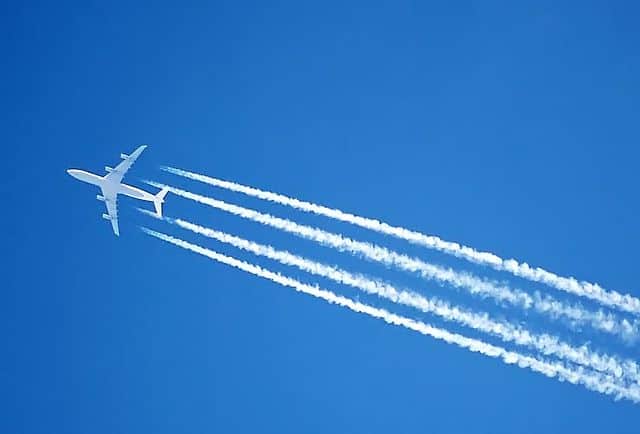Airplane Contrail Length Can Tell You If A Storm is Approaching

Most of us can remember being a little kid and looking up at the sky wondering at the long thin clouds that airplanes seemed to leave in their wake. Was that smoke? Were they crop-dusting? Was the whole thing just plain (ha!) old fashioned magic?
Well, the truth is, as always, more interesting than fiction. Airplane contrails (that’s the technical term for those of you who slept through high school physics) are composed mostly of water vapor, which turns to ice when it vents from jet engines at high altitudes. Combined with the right lighting conditions, and you’ll see those remarkably pretty feather-like traces throughout a clear blue sky. How long they last depends on the air temperature, humidity, and the turbulence at that altitude, but it may be anywhere from a few seconds to several hours, painting the sky with a memory of where a particular flight passed through. Makes you think, doesn’t it?
And for the record: while conspiracy theorists love to talk about insidious plots to fill the sky with chemicals via contrails (Google “chemtrails”, it’s a hoot) there’s no evidence for such a plot. However, you can predict the weather using contrails: thin contrails that dissipate quickly indicate fair weather , while thicker, longer lasting ones may mean that a storm is inbound.
